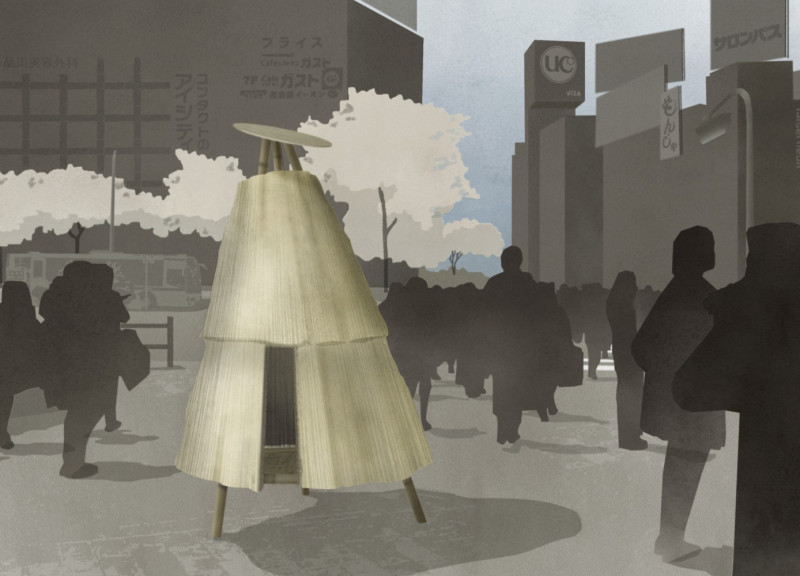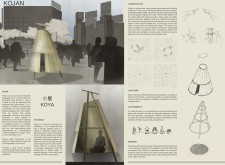5 key facts about this project
Kojan creates a meditative space in the urban landscape of Tokyo. Inspired by the Swedish concept of a "koja," it focuses on simplicity and playfulness. The design offers a place for quiet moments, allowing city dwellers to retreat from the noise. This small structure serves as a sanctuary, fostering imagination and relaxation amid daily life.
Construction Techniques
The design utilizes straightforward construction methods. It consists of three rings of different sizes, made by steam-bending bamboo stalks into circular shapes. The ends of these rings are bound together with rope, forming a strong and flexible framework. Supporting the structure are three thicker bamboo stalks acting as tripod legs. This combination provides stability and establishes a clear connection to nature.
Material Cladding
Kojan's exterior is covered with susuki straw. This straw is applied in two distinct layers to the top and middle rings. There is a small opening in the lower layer that acts as the entrance, allowing easy access while also providing protection from rain and wind. Using susuki straw not only helps with insulation but also helps the structure blend into its surroundings, creating a more immersive experience for visitors.
Internal Arrangement
Inside, Kojan features a woven bamboo seat that hangs from the bamboo core. This design promotes an open atmosphere, inviting reflection and meditation. A slanted opening in the ceiling lets natural light filter in, producing a soothing interplay of light and shadows that adds to the calming environment.
Ephemeral Nature
Kojan is designed as a temporary structure that aligns with the changing seasons. It embraces the transitory nature of time, allowing it to connect with the rhythms of nature. Each autumn, after the harvest of susuki straw, Kojan will be rebuilt, reinforcing its relationship with the local environment.
The circular opening at the top enables sunlight to pour into the space, illuminating the interior and creating shifting patterns throughout the day.



















































